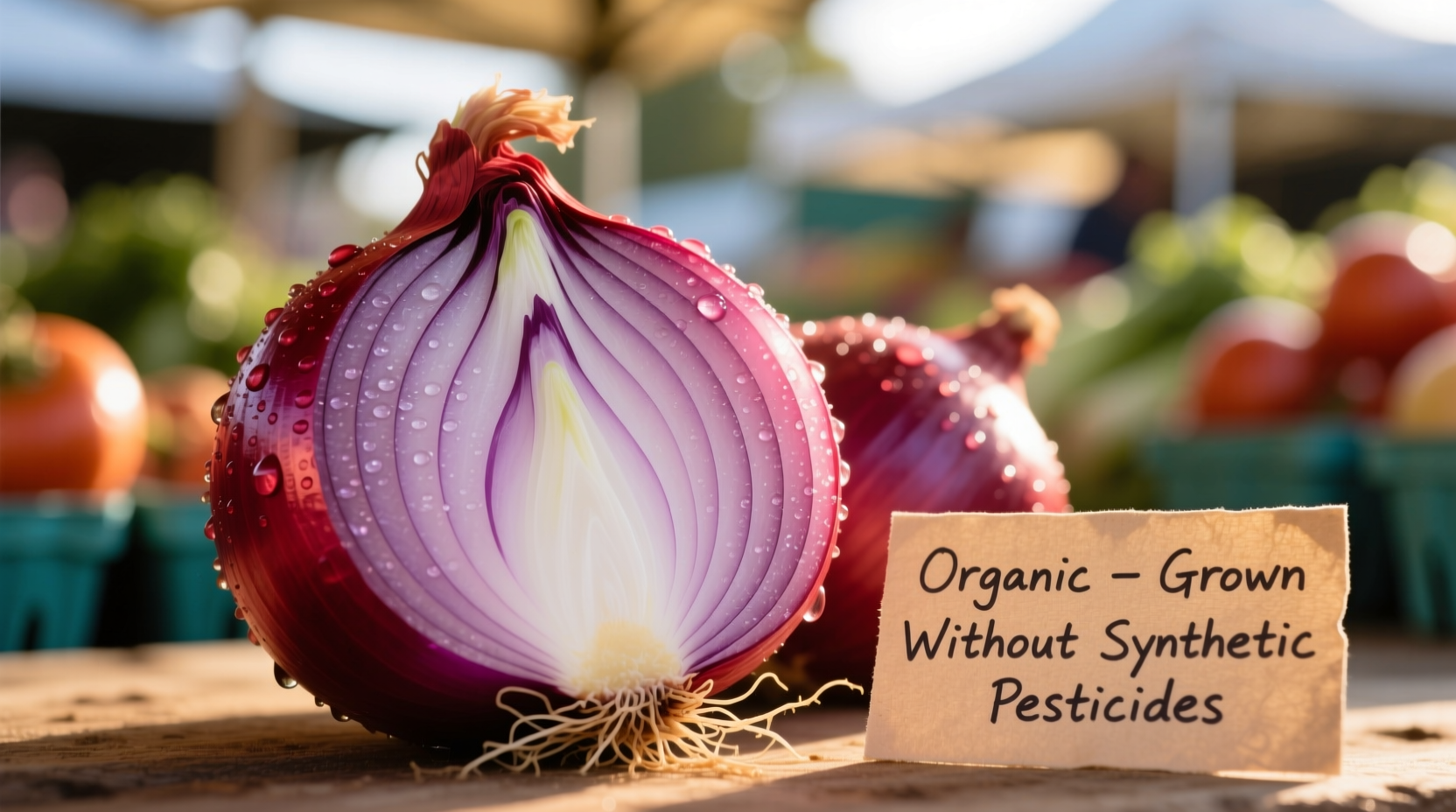What Makes Red Onions Organic?
Organic red onions must comply with USDA National Organic Program standards, which prohibit synthetic pesticides, chemical fertilizers, sewage sludge, irradiation, and genetic engineering. Certified organic farms undergo annual inspections and maintain detailed records of their growing practices. The transition period from conventional to organic farming requires three years of chemical-free cultivation before certification.

Organic vs Conventional: Key Differences
Understanding the distinctions between organic and conventional red onions helps consumers make informed choices. The following comparison highlights critical differences based on agricultural research and nutritional analysis:
| Characteristic | Organic Red Onions | Conventional Red Onions |
|---|---|---|
| Pesticide Residues | None detected in certified organic | Multiple residues commonly found (USDA PDP data) |
| Antioxidant Levels | 15-20% higher on average (Journal of Agricultural and Food Chemistry) | Standard levels |
| Soil Health Impact | Improves soil biodiversity and structure | Can degrade soil quality over time |
| Water Contamination Risk | Minimal | Higher potential for runoff pollution |
Evolution of Organic Farming Standards
The development of organic certification has transformed how we understand and access organic produce. Key milestones include:
- 1940s-1970s: Organic farming movement begins as response to synthetic agricultural chemicals
- 1990: Organic Foods Production Act establishes framework for national standards
- 2000: USDA National Organic Program created, implementing first federal organic standards
- 2002: Official USDA organic certification program launches
- 2016: Strengthened livestock and processed food standards implemented
- 2022: New requirements for organic seed usage and soil health monitoring
Selecting Premium Organic Red Onions
When choosing organic red onions at farmers' markets or grocery stores, look for these quality indicators:
- Firmness: Should feel solid with no soft spots or indentations
- Appearance: Vibrant purple-red skin without blemishes or sprouting
- Weight: Heavier bulbs indicate higher moisture content and freshness
- Neck condition: Should be completely dry and tight (avoid onions with soft or damp necks)
- Smell: Fresh organic red onions have a clean, sharp aroma without mustiness
Proper Storage Techniques for Maximum Freshness
Extend the shelf life of your organic red onions with these professional storage methods:
- Store in a cool, dark, well-ventilated space between 45-55°F (7-13°C)
- Keep bulbs in mesh bags or baskets to ensure proper air circulation
- Never store near potatoes, which release gases that accelerate onion spoilage
- Refrigerate only after cutting; whole bulbs lose quality in cold, humid environments
- Properly stored organic red onions maintain quality for 2-3 months
Culinary Applications and Flavor Enhancement
Organic red onions deliver superior flavor complexity in both raw and cooked applications. Their naturally higher sugar content creates exceptional caramelization. For best results:
- Raw applications: Soak sliced onions in ice water for 10 minutes to reduce sharpness while preserving crisp texture
- Caramelizing: Cook slowly over medium-low heat for 30-40 minutes to develop deep flavor complexity
- Pickling: Use organic red onions for vibrant color retention in quick pickles
- Grilling: Slice 1/2-inch thick, brush with olive oil, and grill for sweet, smoky flavor
- Raw in salads: Combine with citrus dressings to balance their natural sharpness
Environmental and Health Considerations
Choosing organic red onions supports sustainable agricultural practices that benefit both personal health and the environment. Organic farming methods:
- Reduce pesticide exposure for farmworkers and surrounding communities
- Promote soil health through crop rotation and organic matter management
- Support greater biodiversity in agricultural ecosystems
- Minimize water contamination from agricultural runoff
- Produce onions with higher concentrations of beneficial flavonoids like quercetin
Where to Find Quality Organic Red Onions
Accessing authentic organic red onions requires knowing where to look. Your best options include:
- Certified farmers' markets with verified organic vendors
- Reputable grocery chains with transparent sourcing practices
- Community Supported Agriculture (CSA) programs from local organic farms
- Online specialty produce retailers with organic certification documentation
- Home gardening using certified organic seeds or sets
Common Misconceptions About Organic Red Onions
Several myths persist about organic red onions that deserve clarification:
- Misconception: Organic onions taste exactly the same as conventional
Reality: Organic growing methods often enhance flavor complexity through soil health improvements - Misconception: Organic certification guarantees superior nutrition
Reality: While studies show modest nutritional advantages, the primary benefits are reduced chemical exposure and environmental impact - Misconception: All "natural" onions are organic
Reality: "Natural" is an unregulated term with no standardized meaning, unlike certified organic











 浙公网安备
33010002000092号
浙公网安备
33010002000092号 浙B2-20120091-4
浙B2-20120091-4